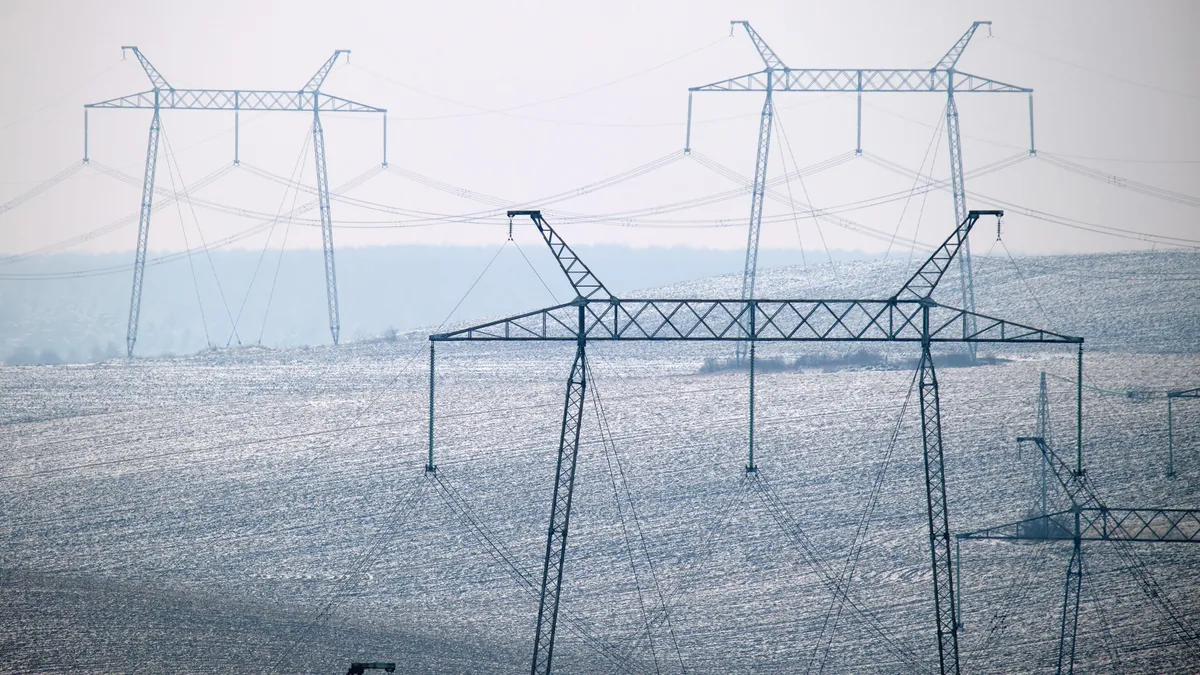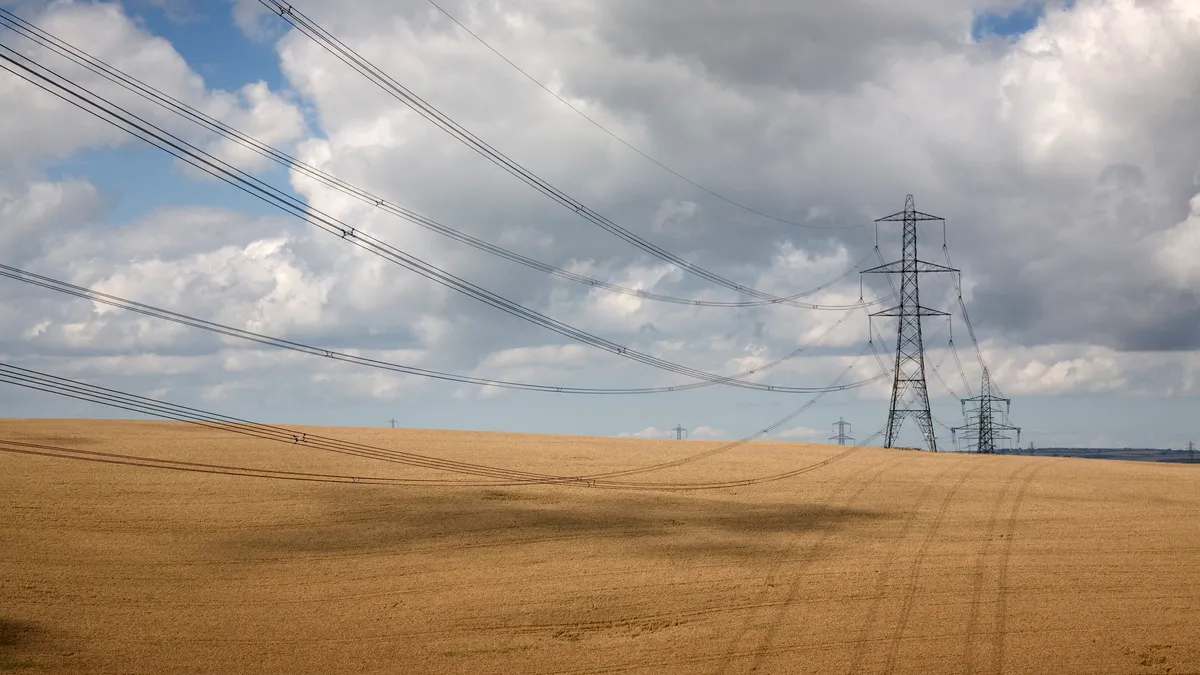The Federal Energy Regulatory Commission on a 4-0 vote on Thursday largely upheld its Order 1920 on transmission planning and cost allocation, but gave state regulators a bigger role in shaping scenario development and cost allocation.
States can also extend the “engagement period” they have for negotiating cost allocation methodologies to a year from six months, with compliance deadlines being lengthened by a corresponding six months, according to the revised rule, called Order 1920-A.
“I would say to the states, this is giving you a much bigger toolbox with a much better set of tools,” said FERC Commissioner Mark Christie, who voted against the agency’s initial Order 1920 in May, partly because he said it didn’t give state regulators a large enough role in the transmission planning and cost allocation processes.
FERC’s decision to revise its initial planning rule was driven by 49 requests for rehearing from states, energy trade groups and others.
The revised rule maintains the original decision’s requirements that transmission planners develop transmission plans that look ahead at least 20 years and that they consider using grid-enhancing technologies in their plans.
What changed in the revised rule?
The revised rule requires transmission providers to include state input about how future scenarios used in long-term regional transmission planning will be developed, Michael Kellerman, a staffer in FERC’s Office of General Counsel, said during the agency’s open meeting.
FERC also required transmission providers to include any state-agreed cost allocation proposals in their compliance plans, even if the transmission provider is proposing their own cost allocation method. FERC can choose the state plan as long as it complies with Order 1920 and cost causation principles, Kellerman said.
In addition, states can request transmission providers to conduct additional planning scenarios beyond the required three scenarios. They can, for example, request a baseline scenario that doesn’t include state energy policies to see how those policies affect transmission costs, according to Christie. States could then establish a cost allocation formula so that states with policies that trigger transmission buildouts pay for the construction, Christie said.
FERC removed a requirement that transmission planners consider corporate energy goals in developing their plans. It also said transmission planners don’t have to use a set of seven specific economic and reliability benefits to identify their transmission needs.
Under the revised rule, transmission providers have up to two years to file compliance plans, up from one year in the original rule. Order 1920-A will take effect 30 days after it is published in the Federal Register.
What commissioners said
The amended rule “expands the states’ pivotal role throughout the process of planning, selecting and deciding how to pay for transmission facilities,” FERC Chairman Willie Phillips said. “State involvement is critical to the success of this rule.”
A heightened state role is critical because they are on the “front line” protecting consumers in states, according to Christie. “So I've been consistent that state regulators have got to have the authority to protect their consumers from unfair or expensive transmission costs,” he said.
States will have increased transparency on the benefits transmission providers use when developing their plans, according to Christie. “The states will get to see what they're getting charged, what benefits they're getting charged for, and they'll get it right down to the [transmission] zone,” he said. “That's a big step forward.”
FERC’s rule comes amid growing electricity demand, according to Commissioner David Rosner. “We need to find ways to connect generation to demand, and to accomplish this, we need a transmission grid that is up to the task,” he said. “This forward-looking, holistic transmission planning reform, and this order, will give transmission providers the foresight needed to get ahead of these challenges ensuring consumers have the reliable and affordable energy that they deserve.”
Rosner said that FERC clarified that Order 1920 allows states to agree to costs in proportion to the benefit that they define themselves, including the benefit of achieving a state's policy goals. “This is important because it allows states which have different goals and different priorities to plan together, but also to agree on ways to pay for projects in ways that all states think are fair,” he said.
FERC Commissioner Judy Chang said Order 1920-A “substantially” improves transmission planning and will help break a logjam over cost allocation.
“It's a necessary step for the commission to create the rules of the road and the guidance for transmission development for this country,” Chang said. “It's absolutely critical that we plan for the future in the most comprehensive way possible.”
FERC Commissioner Lindsay See said she didn’t participate in the decision on the advice of an agency ethics official.
A ‘Kumbaya’ moment
“It is a … ‘Kumbaya’ moment, where there's actually remarkable agreement between what the states wanted and what a bipartisan FERC provided,” said Rob Gramlich, president of Grid Strategies, a consulting firm focused on transmission and power markets.
The bipartisan decision makes for a more sustainable rule, according to Gramlich. “Hopefully this reduces a lot of the opposition in the courts and parties kind of pull back from their court challenge,” Gramlich said. “Often the courts are like a random number generator. You just have no idea what they're going to come up with, and that's a lot of regulatory risk that nobody needs.”
The U.S. Court of Appeals for the Fourth Circuit put the case on hold while FERC considered the rehearing requests.
Gramlich said he hopes FERC’s revised rule spurs regions to work on complying with Order 1920-A. “Some regions are actually planning, and I hope all regions now see the writing on the wall of how durable this final order is and go ahead and get busy on the planning involving the engineers and the technical people, while the lawyers go through their compliance steps,” he said.
FERC granted the “vast majority” of the changes state utility regulators were seeking in their rehearing requests, according to Kent Chandler, a resident senior fellow in energy and environmental policy at the R Street Institute.
In some cases, FERC found “roundabout ways” to address state concerns, said Chandler, who was the Kentucky Public Service Commission chairman and president of the Organization of PJM States when rehearing requests were filed. Some states, for example, wanted FERC to only approve cost allocation methodologies approved by states, he said. Instead, FERC required transmission providers to file state-approved methodologies to be considered alongside any transmission provider proposals, he said.
FERC also required transmission providers to provide detailed reports on their discussions with states about cost allocation, which will give the agency more information when they review those proposals, Chandler said.
FERC’s ability to reach a 4-0 decision on the rehearing requests bodes well for the agency heading into next year, according to Chandler.
“It provides me confidence going forward for the agency that they were willing to work so well together and come up with an outcome that made everyone happy,” Chandler said. “I have a lot of confidence that if we keep all five of these commissioners through the next year, that they can get a lot done and ensure that it's done in a bipartisan way that ensures that it is sustainable.”























